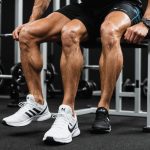Understanding the Importance of Tire Compounds in Wet Conditions
In the realm of sport bike racing, tire compounds are pivotal for peak performance, especially in unpredictable wet conditions. Different tire compounds are designed to meet specific needs, and their selection can drastically impact wet weather performance.
Sport bike racing typically offers riders a variety of tire options. These compounds range from soft to hard, each offering distinct advantages. The right tire compound can enhance grip, improve acceleration, and provide stability. In wet conditions, softer compounds are often preferred due to their enhanced grip, as they adhere better to slick surfaces. This is essential for maintaining control and preventing accidents.
Also to discover : Optimal Foot Peg Placement for Minimizing Riding Fatigue on Long UK Journeys
Selecting the appropriate tire compound isn’t just about speed; it’s crucial for safety. The wrong choice can lead to decreased handling capabilities and increased risk of skidding. Safety and performance are interconnected, and understanding how tire compounds influence these can lead to better decision-making on the track. For sport bike racers, knowledge of tire compounds adds a strategic element, blending technical acumen with racing intuition.
By carefully considering tire compound selection, racers can optimise their performance, ensuring a safer and more competitive race experience.
This might interest you : Ultimate Guide to Cleaning and Maintaining Sport Bike Chains for UK’s Harsh Winter Conditions
Key Tire Compounds for Wet Weather
Understanding the diverse wet weather tire compounds is essential for navigating slippery roads. These compounds are meticulously engineered to balance grip and durability, ensuring safety and performance in challenging conditions.
Overview of Common Compounds
Tires designed for wet conditions often use silica-based compounds. Silica enhances grip by improving the tire’s flexibility and traction. This material is widely praised for maintaining its pliability in cold and wet conditions, unlike traditional rubber compounds which may harden.
Comparative Analysis of Compound Properties
When comparing wet weather tire compounds, silica-based options clearly show superior performance. Their ability to maintain grip without sacrificing durability sets them apart. On the other hand, compounds relying heavily on carbon black might offer longer durability, but they often lack the necessary grip for wet surfaces.
Performance Metrics in Wet Conditions
Evaluating wet-weather tires necessitates looking at several criteria:
- Performance under rain and standing water: Tires must efficiently channel water to prevent hydroplaning.
- Temperature resistance and wear rate: Maintaining performance across temperature changes is crucial, as is a reasonable wear rate to ensure value.
- Flexibility and grip factors in wet weather: Tires must remain flexible to maximise traction, enhancing control and safety when road surfaces are slippery.
Understanding these dynamics aids in selecting the right tire compound for wet conditions, prioritizing safety and longevity.
Expert Insights on Tire Selection
Choosing the right tires for racing can be a daunting task, but expert recommendations provide the guidance needed for optimal performance. Racing experts universally stress the importance of selecting tires based on track conditions and vehicle specifications. Identifying the best tire often depends on these crucial factors.
Interviews with Racing Experts
Interviews with renowned racing specialists reveal the significance of understanding tire attributes such as tread pattern, durability, and compound. These professionals emphasize that precise tire selection can enhance grip, improve lap timing, and offer safety benefits. Experienced racers consistently advise selecting tire models known for their performance reliability and adaptability to real-time track changes.
Recommended Tire Brands and Models
For amateur and professional drivers alike, certain tire brands often emerge as frontrunners. Experts typically recommend brands such as Michelin, Pirelli, and Goodyear for their innovative technology and proven track record in racing circuits. Each brand provides a variety of models suited to different racing scenarios, ensuring drivers can find a perfect match for their needs.
Considerations for Various Racing Scenarios
In addition to brand reputation, factors like weather conditions, track surface, and intended use should also dictate tire choice. For instance, wet races require tires engineered with superior water evacuation capabilities, while dry conditions might benefit from softer compounds offering greater speed. Making a thoughtful tire selection can lead to a remarkable racing experience.
Climate Considerations in the UK
Understanding the impact of climate on tire performance is crucial for navigating the UK’s diverse weather conditions.
Overview of UK Weather Patterns
In the UK, the climate is characterised by weather variability, with frequent shifts in conditions. This requires tyres that can handle wet, icy, or dry roads interchangeably. Understanding these patterns helps drivers make informed decisions about their tyre performance requirements.
Impact of Climate on Tire Choice
Given the UK’s unpredictable weather, tyres need to provide effective grip and durability. Tyres suited for all-weather conditions can enhance safety and performance. Thus, the UK climate imposes primary considerations on the material and tread design to maximise traction and longevity.
Seasonal Variations and Tire Recommendations
- Regularly adjust tire selection based on weather forecasts to ensure optimum performance.
- Be aware of how different UK regions impact tyre choice, with each area offering distinct weather challenges.
- Consider long-term tire performance expectations relative to the climate. This involves evaluating potential weather shifts throughout the year which may influence your vehicle’s tyre performance and safety.
Adapting tyres to the prevailing weather ensures both safety and efficiency in UK driving conditions.
Maintenance Tips for Wet Weather Tires
Maintaining wet weather tires involves a few key practices to ensure optimal performance and longevity. Firstly, regular tire maintenance is crucial. This includes periodic checks of tire pressure, as under-inflated tires can lead to reduced traction, especially in wet conditions. Keeping tires properly inflated not only enhances safety but also prolongs their life.
Monitoring the tread depth is equally important. Treads are more than just grooves; they channel water away, preventing hydroplaning. A tread depth below 3mm can critically reduce the ability to manoeuvre and brake effectively on wet roads. Consider using a tread depth gauge to regularly check and ensure adequate depth.
During the off-season, store your wet weather tires properly to maintain their condition. Stack them horizontally in a cool, dry place away from direct sunlight and ensure they are clean before storing to prevent degradation.
By following these practices, not only do you ensure the safety and performance of your wet weather tires, but you also extend their lifespan, making them a smart investment for your vehicle.
Product Reviews and Recommendations
In this section, we delve into user experiences and explore the nitty-gritty of tire performance through tire reviews and detailed comparisons.
Top-rated Tires for Wet Conditions
Navigating slick roads requires top-rated tires specifically designed for wet conditions. Tires like the Michelin Pilot Sport 4 and Continental PremiumContact 6 have consistently received high marks in performance comparisons, excelling in both grip and stability. Users praise their ability to maintain traction even during heavy rainfall, significantly reducing aquaplaning risks.
User Experiences and Reviews
Through extensive user feedback, drivers share diverse experiences. Many applaud the Goodyear Eagle F1 Asymmetric for its stellar handling, while some note a slight compromise on comfort. Reviews illustrate varied priorities among drivers, with aspects like quietness, grip, and longevity receiving notable attention.
Value for Performance Comparisons
Evaluating the cost versus performance aspect, tires like the Pirelli Cinturato P7 offer robust performance for budget-conscious consumers. Reviews highlight that while premium tires often boast superior longevity, well-chosen mid-range alternatives can deliver exceptional value without compromising safety or satisfaction. Additionally, investing in better tires can save money long-term due to reduced wear and improved fuel efficiency.











